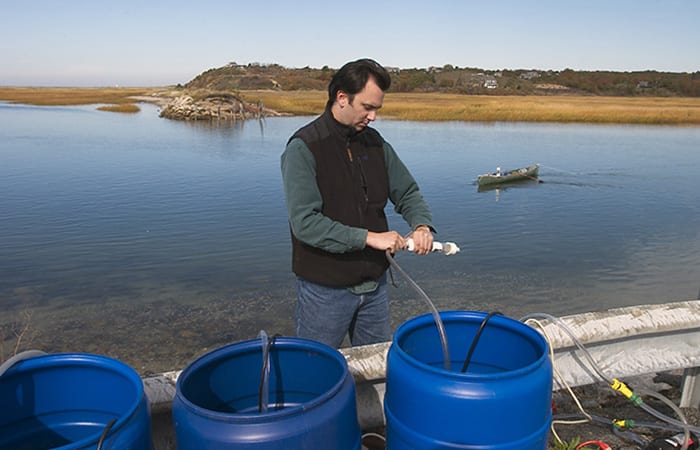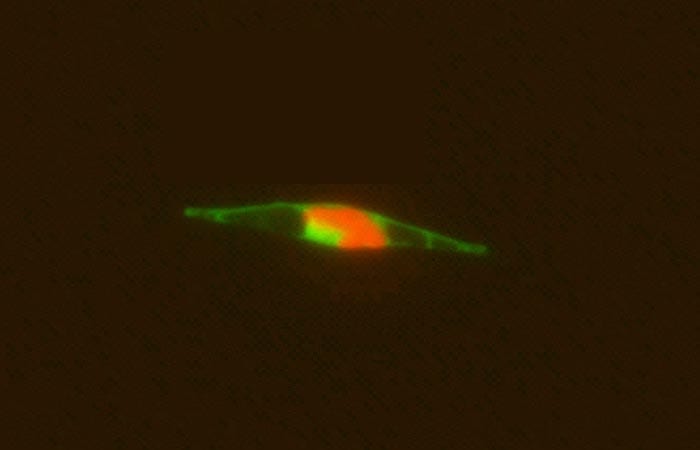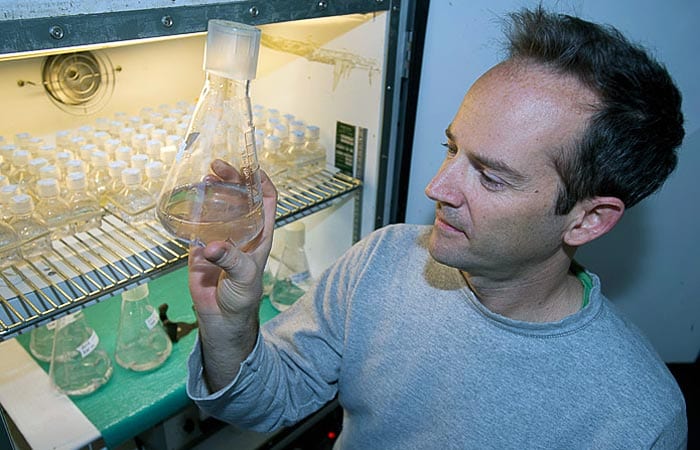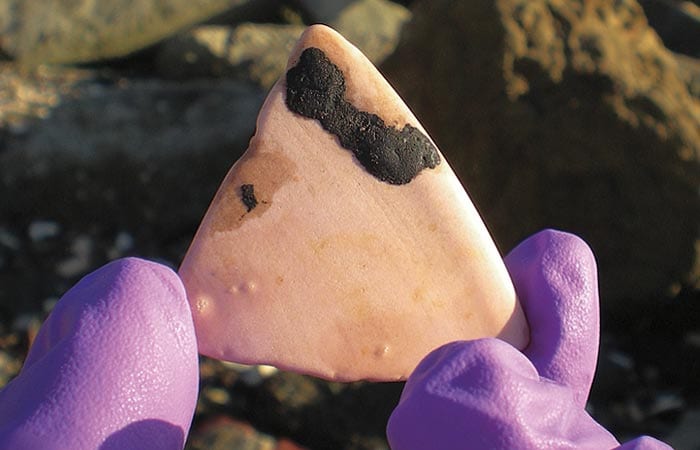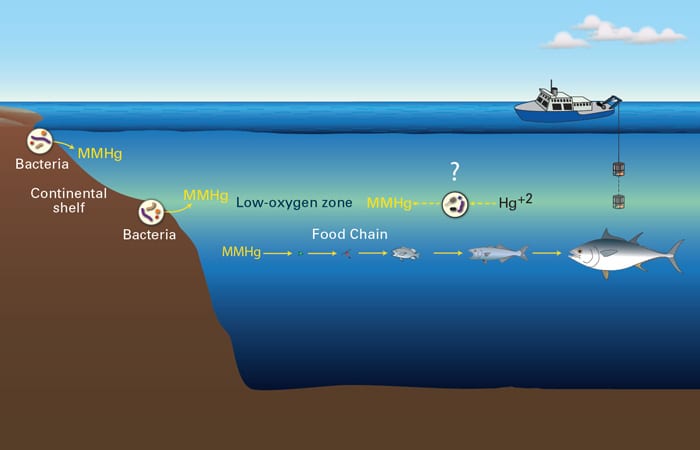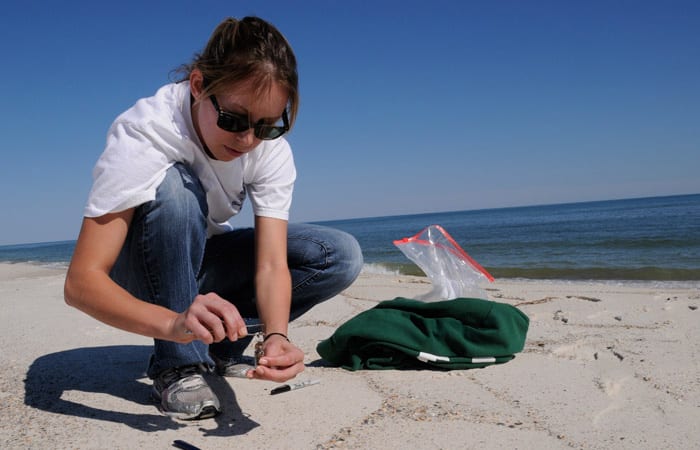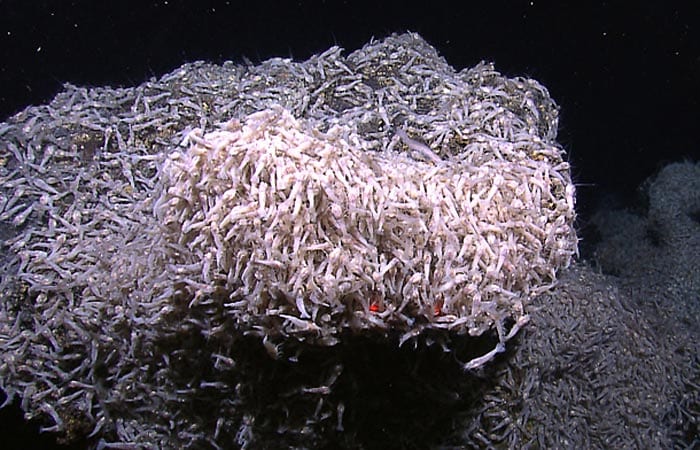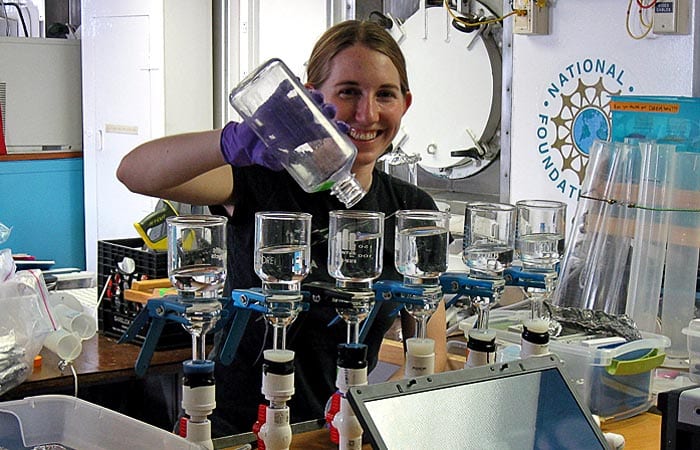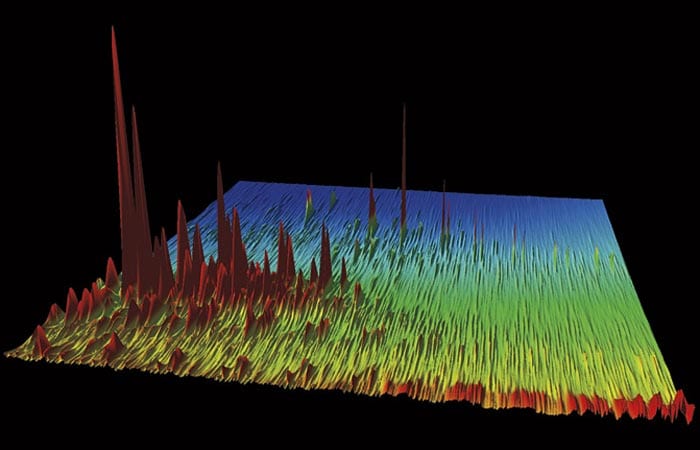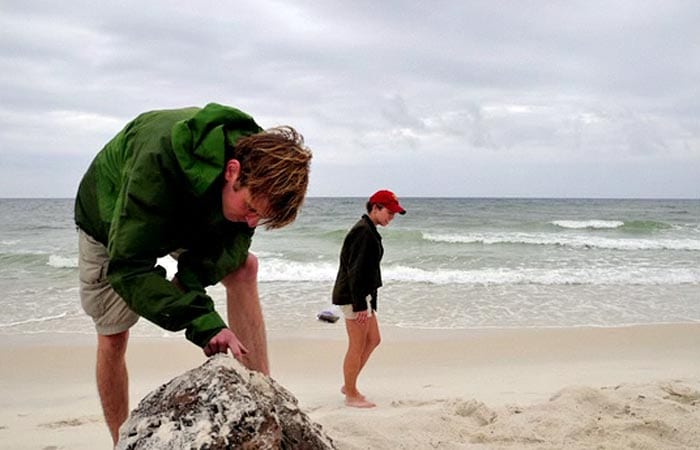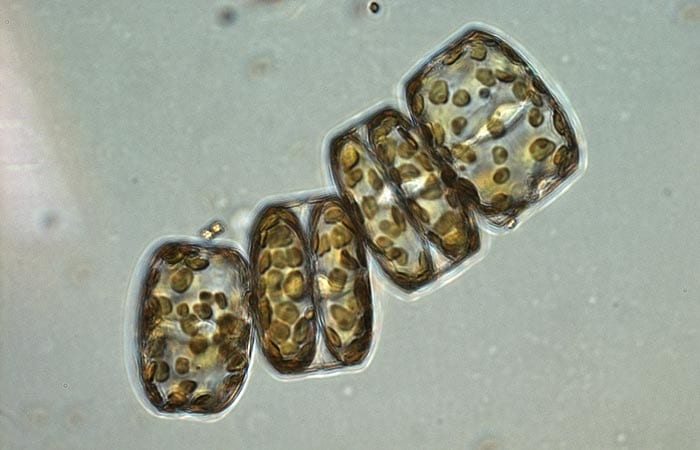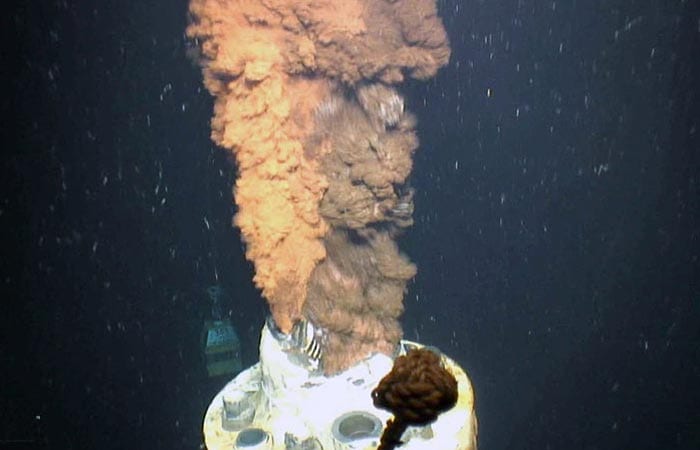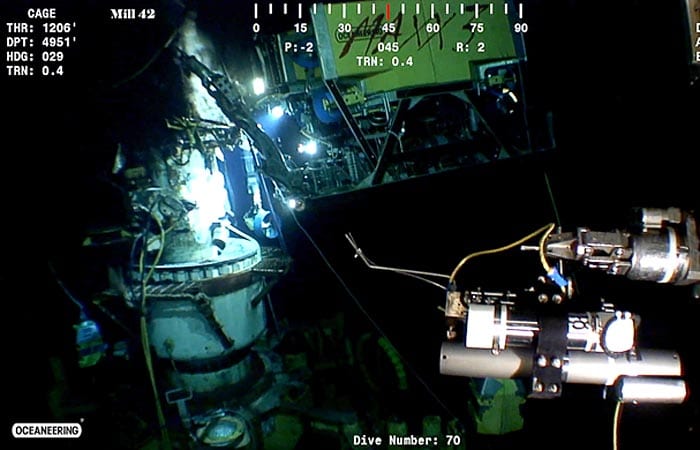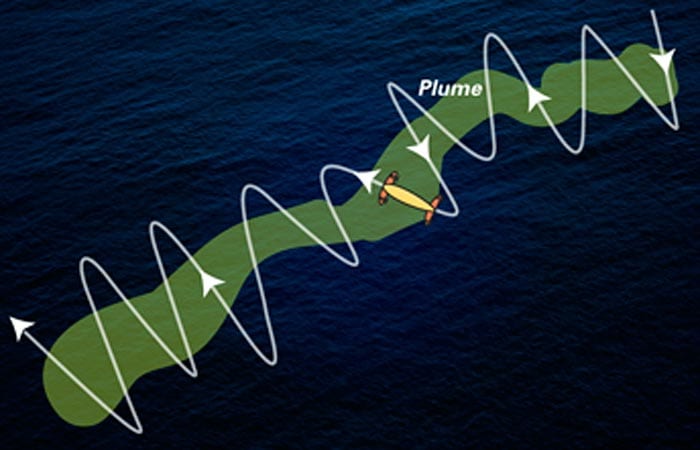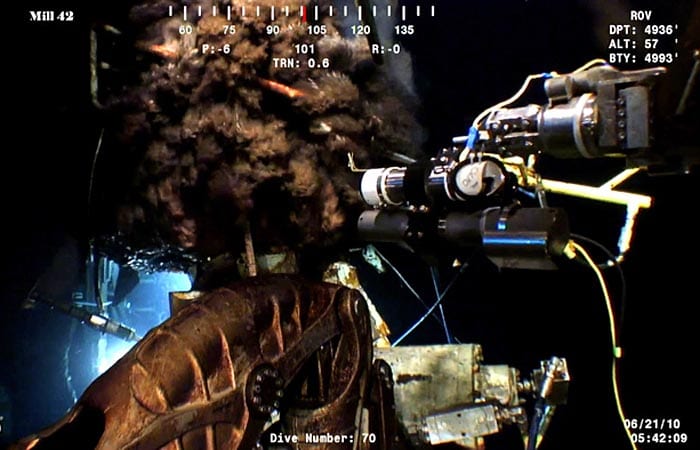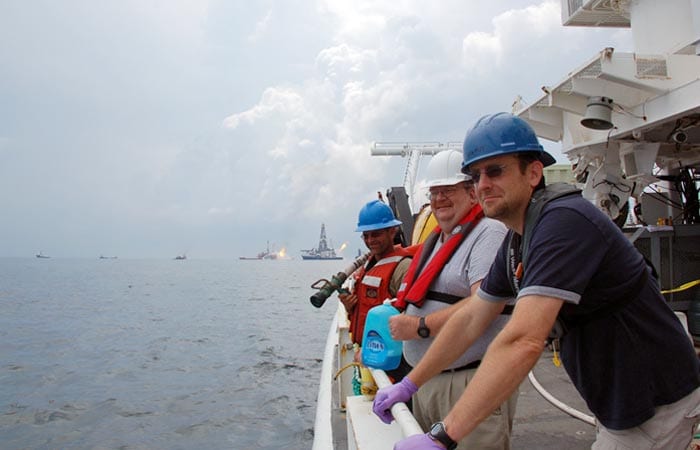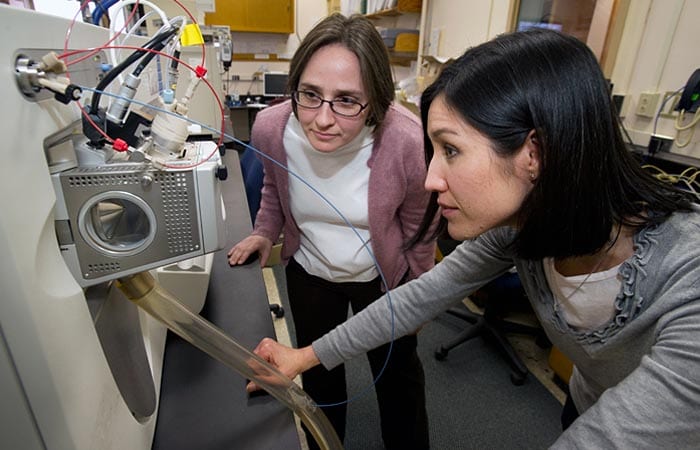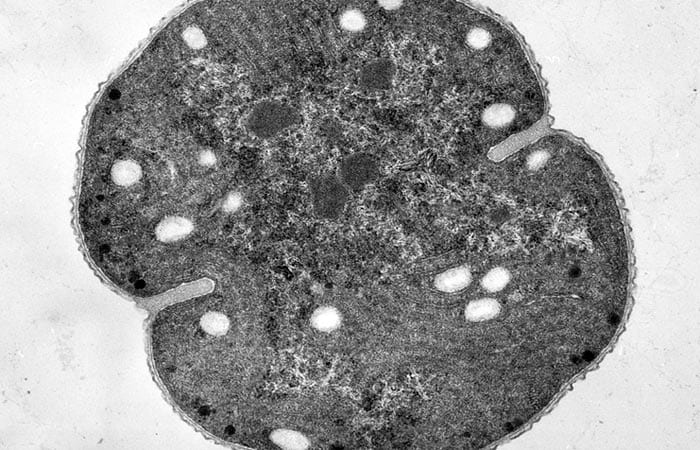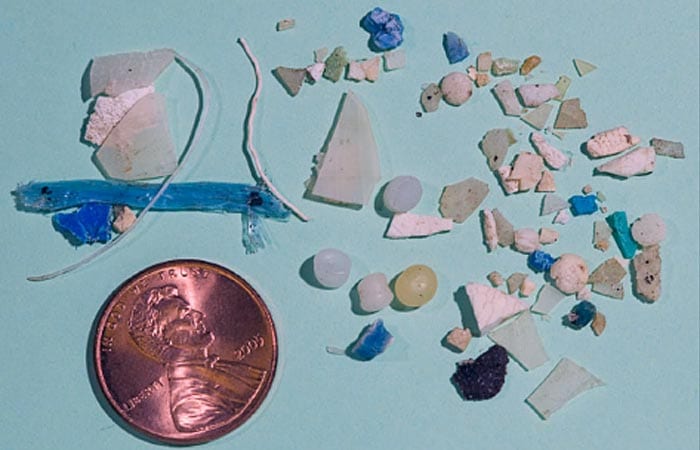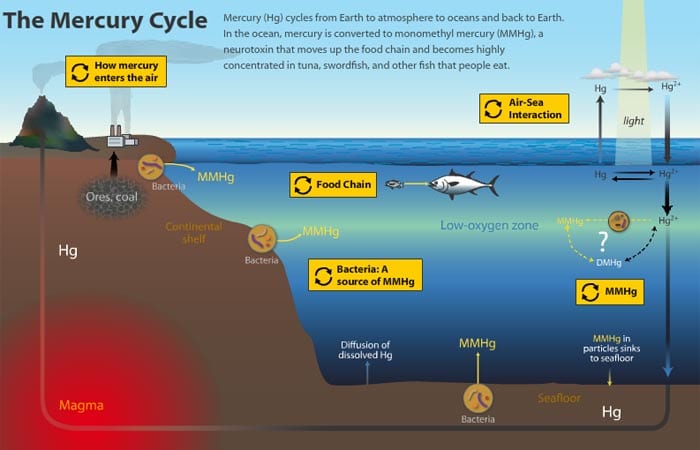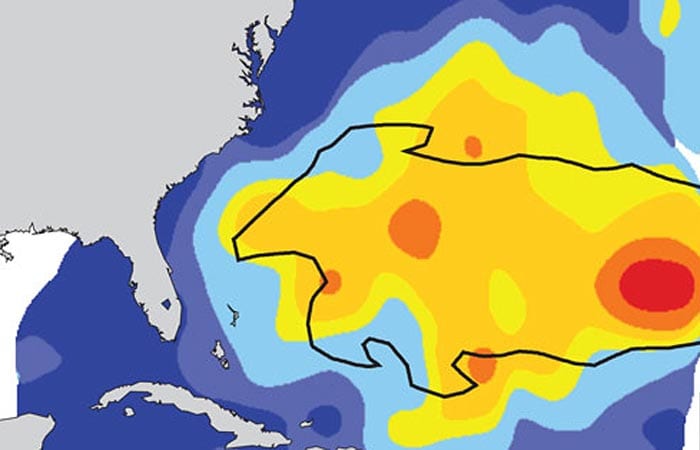Marine Chemistry & Geochemistry
Underneath and Overlooked: Groundwater
Matt Charette has been pulling off the sheetrock in Earth’s basement to reveal a hidden plumbing system that pumps water into the ocean. Rivers carry most of the rain that…
Read MoreScientists Discover the “Vitamin B12 Claw”
Scientists have revealed a key cog in the biochemical machinery that allows marine algae at the base of the oceanic food chain to thrive. They have discovered a previously unknown…
Read MoreA ‘B-12 Shot’ for Marine Algae?
Studying algal cultures and seawater samples from the Southern Ocean off Antarctica, a team of researchers from Woods Hole Oceanographic Institution (WHOI) and the J. Craig Venter Institute have revealed a key cog in the biochemical machinery that allows marine algae at the base of the oceanic food chain to thrive. They have discovered a previously unknown protein in algae that grabs an essential but scarce nutrient out of seawater, vitamin B12.
Read MoreLessons from the 2011 Japan Quake
When the ground in Japan started shaking on March 11, 2011, the Japanese, who are well accustomed to earthquakes, knew this time was different. They weren’t surprised—the fault that ruptured…
Read MoreMarine Microbes vs. Cystic Fibrosis
Microbes that grow in the ocean could one day help doctors combat the deadly disease cystic fibrosis (CF), said Tracy Mincer, a microbiologist at Woods Hole Oceanographic Institution. Mincer studies…
Read MoreTracking Toxic Chemicals in Oil Spills
I don’t do San Francisco like most people. I skip the cable cars, Lombard Street, Alcatraz, and the fine restaurants and museums. Soon after my flight arrives, I drive my…
Read MoreOn the Trail of Mercury in the Ocean
I returned from Hawai’i in mid-December with 700 bottles of seawater. The bottles hold what I hope are solutions to an abiding mystery. In the middle of the ocean, waters…
Read MoreScientists Solve a Deepwater Horizon Mystery
Right after the Deepwater Horizon oil rig exploded April 20, 2010, marine scientist Monty Graham from the Dauphin Island Sea Lab in Alabama began exploring Gulf of Mexico waters to…
Read MoreSearching for Life on the Seafloor
Smaller than a fingernail, like bits of downy red feathers, baby tubeworms cling to a vertical wall towering alongside the submersible Alvin 2,500 meters beneath the sea in 2006. Repaved…
Read MoreTracking an Elusive Chemical: Estrogens
On a crisp October morning, our small boat bobbed gently 10 miles offshore. The sun glinted off the dark blue surface of Massachusetts Bay and directly below us, all of…
Read MoreThe Ocean’s Tiny Chemists
Once as I was flying cross-country over the middle of the United States, the woman in the seat next to me remarked: “You know, in Nebraska when there’s a game…
Read MoreEvery Chromatogram Tells a Story
Where is this mountainous landscape? Actually, that’s the wrong question. It’s a landscape, all right, but it’s a chemical landscape: You’re looking at oil from the Deepwater Horizon spill. Each…
Read MoreResearch Road Trip
Psychotherapy for Plankton
The scene: A diatom is out of its oceanic habitat and on a couch, talking to a therapist. The diatom is stressed. It can’t ever seem to get enough nutrients.…
Read MoreUp From the Seafloor Came a Bubbling Brew
Eleven days after the explosion at the Deepwater Horizon oil rig on April 20, 2010, representatives from BP called Andy Bowen at Woods Hole Oceanographic Institution (WHOI). “It had become…
Read MoreFour Men. Twelve Hours. One Crucial Sample.
The prize they coveted amounted to nothing more than about four gallons of natural gas and less than a half-cup of oil. Where it came from, however, made it unique.…
Read MoreA Plume of Chemicals from Deepwater Horizon
Along with the torrent of hot gas and oil spewing from the bottom of the sea, hot hints and rumors were also streaming out of the Gulf of Mexico in…
Read MoreA Small Sip from a Big Gusher
How much oil gushed out of the Deepwater Horizon well and into the Gulf of Mexico? For all stakeholders in the oil spill, that is a critical starting point for…
Read MoreOil, Microbes, and the Risk of Dead Zones
In the scramble to get to the Gulf of Mexico to study the Deepwater Horizon oil spill, Ben Van Mooy found out firsthand why the National Science Foundation called its…
Read MoreAfter the Oil Spill, Finding a Drop in the Ocean
In the aftermath of the Deepwater Horizon disaster in April, marine chemist Elizabeth Kujawinski recognized that a technique she had developed for entirely different reasons could readily be adapted to…
Read MoreRecycling Rare, Essential Nutrients in the Sea
In the vast ocean where an essential nutrient—iron—is scarce, a marine bacterium that launches the ocean food web survives by using a remarkable biochemical trick: It recycles iron. By day,…
Read MoreMicrobes Hitch Rides on Plastics in the Sea
This research was supported by the National Science Foundation, the National Oceanic and Atmospheric Administration, the National Fish and Wildlife Foundation, and the International Census of Marine Microbes initiative.
Read MoreHow Does Toxic Mercury Get into Fish?
Most everyone has heard by now that we should limit our consumption of certain fish because they accumulate high levels of toxic mercury. But nobody—not even scientists—knows how that toxic…
Read MorePlastic Particles Permeate the Atlantic
Recent reports of a “Great Pacific Garbage Patch” in the subtropical waters of the North Pacific Ocean described a floating island as large as Texas—so thick that one could potentially…
Read More
